1 Harnessing Perplexity AI for Research and Effective Source Identification
Bryony Drought

Image created with Night Cafe image generator.
Prompt: A student immersed in a metaverse of information in a futuristic world. Preset style: Gouache
Introduction
In our increasingly Artificial Intelligence (AI) driven world, individuals must distinguish between accurate information and misinformation. The next generation, often called the internet generation, is constantly exposed to various forms of media such as TikTok, YouTube, and Reddit. Equipping them with Critical Media Literacy skills is imperative. These skills empower them to discern intent, bias, misinformation, representation, and influence in the content they encounter.
Given the ease of accessing vast amounts of information within seconds, students must learn to identify the sources of information and leverage AI tools to verify their validity. It is essential for students to independently verify the credibility of sources and information, including those provided by chatbots. Technologies like Perplexity AI offer solutions to address this challenge effectively.
Perplexity AI is an AI tool used as a powerful search engine and Chatbot based on OpenAI’s GPT technology (Nelson, 2023). Perplexity AI uses the power of machine learning and natural language processing (NLP) to understand the user’s intent and provide helpful advice and concise information (Mastery, 2023). This AI assistant also has a Copilot option, which uses GPT-4. While Perplexity is free to use, there is a Pro option at a subscription rate, which includes features such as more GPT-4 Copilot uses (currently, the free option has five uses every four hours), unlimited file uploads, and private channel with other Pro users and Perplexity employees. Perplexity AI can access the Internet in real-time to gather information, providing up-to-date and accurate information (Shaikh, 2023).
Features of Perplexity AI:
- Uses machine learning and NLP to provide real-time and accurate* information.
- Web and mobile applications available.
- Citation/sources embedded in the answer.
- Users can select the sources gathered for response, such as academic papers, YouTube, Reddit, Wolfram|Alpha, or a combination.
- Provides possible related questions for the user to select.
- Offers a Copilot mode that is powered by GPT-4, which can guide the search experience with interactive inputs to tailor search results.
- Users can create an AI profile with information about themselves for more tailored responses.
- Option to upload documents and ask questions regarding documents, e.g. “Summarise document with key ideas.”
*It is important for users to verify the accuracy and timeliness of the sources provided by Perplexity AI, as with any AI-powered chatbot (Nelson, 2023).
Critical Media Literacy (Connection to Curriculum)

Perplexity AI is an excellent tool for developing critical media literacy skills. MacDowell and Korchinski (2023, p. 5) explain that Chatbot tools need to be seen “as a helper rather than a doer.” Students should utilize Perplexity AI to support their learning, not supplement it. Critical media literacy skills are essential for students to critically view information to determine how sources are created, their intention, and their influence and impact on society. Some ways to utilize Perplexity AI to develop these skills are:
- Evaluate the reliability of sources: Perplexity AI provides the sources it uses to generate its response. Users can use a critical lens to check the validity of these sources.
- Bias Recognition: Users can use the information and sources to determine bias by checking the publishers/authors’ background, ownership and influence, examining language and tone, statistics and data provided, looking into funding or sponsorship, and comparing it with multiple sources.
- Stereotype and Representation: Users can use the information/sources to check for stereotypes or misrepresentation by examining visual media within sources, fact-checking, generalizations and tokenism used, author/publishers’ context, the intent of the article, comparison to other articles, and consulting experts or impacted communities.
- Privacy and ethical concerns: When using tools such as Perplexity AI, students must be aware of their privacy, property, and intellectual rights. Due to the range of sources Perplexity AI uses (including Reddit and YouTube), it emphasizes the power and permanence of online content and the caution that should be applied when using it.
- Using Perplexity AI to conduct critical analysis on sources: In addition to the user critically analyzing Perplexity AI’s sources, Perplexity AI can also check a source’s validity, bias and context with such prompts as “What is the author’s background and history in this area?” and “What could the company’s intentions be to conduct this study?”
- Copilot Function: The Copilot function prompts users with follow-up questions for a more precise and tailored response. This follow-up gives users an understanding of how to develop more precise prompts and the contextual information that should be included.
The more students engage with Chatbots, like Perplexity AI, the more they develop their media literacy. This results in understanding its capabilities and functions and how to provide effective prompting to gather more accurate and precise information.
Affordances and Constraints
Affordances

Perplexity AI is a valuable tool for finding up-to-date information quickly and efficiently, with the added benefit of providing sources for users to validate the information themselves. This intuitive and user-friendly tool can be used to assist users with research questions, providing in-text citations and the ability to select what stream of sources they want to use, e.g. academic journals. Searching through thousands of relevant sources in seconds reduces the hours users spend searching and reading through endless sources until they find one relevant to their topic. In addition to the search function, users can upload documents and request prompts such as “Summarize into key ideas,” “What are the key components of an effective phonics program stated in this document?” and “Find articles with opposing views to this one.” Perplexity AI allows users to organize and save their research into collections and title their search threads. Users are encouraged to complete an “AI profile” used in the searches to help gather information tailored to their needs. The Copilot option uses GPT-4 technology and helps develop a more customized response with the Chatbot asking further questions to refine the output. The related questions offer users additional options for exploring their research.
Constraints
While Perplexity AI is a great learning tool, an understanding of its constraints and limitations must be applied. Perplexity AI gathers information from various Internet sources such as YouTube and Reddit, which can provide inaccurate and biased information. While it can be a valuable tool for finding information quickly, Perplexity AI should not be relied on solely for research. Validating information and using various sources is crucial for a comprehensive and balanced understanding. Perplexity AI has the option to refine the search to academic articles. However, these are only sometimes peer-reviewed, and the same critical lens needs to be applied. Users must also know about privacy and how their information can be stored and used. Privacy for AI models is still unclear, so use caution when providing information and personal details (Mollick & Mollick, 2023).
The Process
Sign up:
- Visit Perplexity AI
- To use Perplexity AI does not require an account. However, users will have to create a free account to save threads, use Copilot, or upload a document. Account setup can be done by using an existing Google or Apple account or signing up using an email.
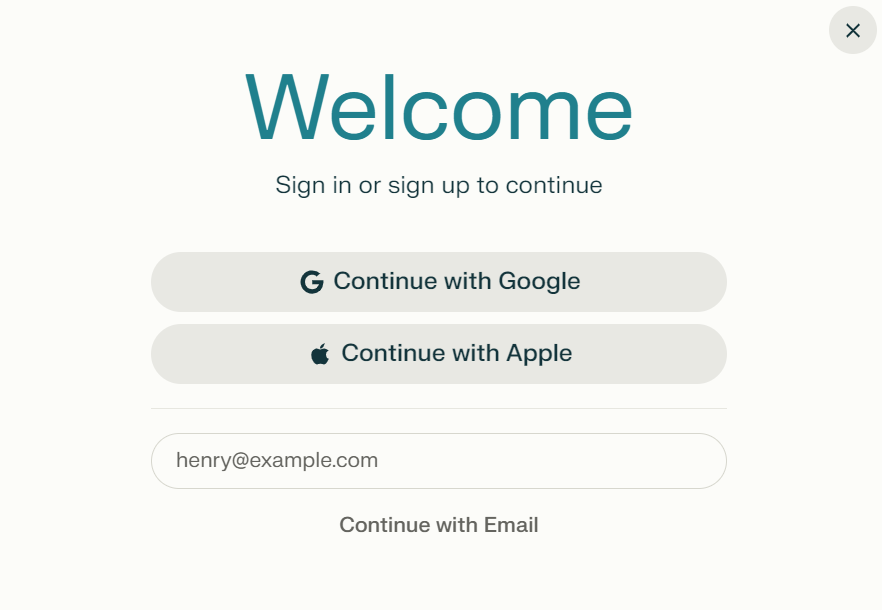
Searching Perplexity AI:
- On the home page, type the query in the box provided. For example, “What are key instructional strategies of phonics programs associated with effectiveness?”

- Click the focus to select the mode/area Perplexity AI will retrieve the answer from (the sources it will use).
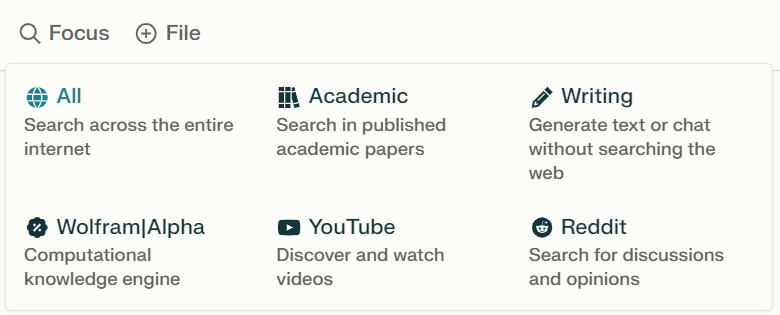
- Users can upload files for the search by selecting the file option. The free version has a limit of four uploads a day.
- Select or deselect “Copilot” as part of your search using GPT-4 technology. The free version has five Copilot uses that refresh every four hours.
- Click the arrow in the bottom right corner to generate the response.
How to read Perplexity AI response:
- A generated response repeats the user’s query above, the sources used, and the answer.
- The numbers found at the end of some sentences in the generated response indicate the sources used to generate the ideas, similar to how in-text citations are used. To check these sources, click on the numbers, and they will take you to the original source.
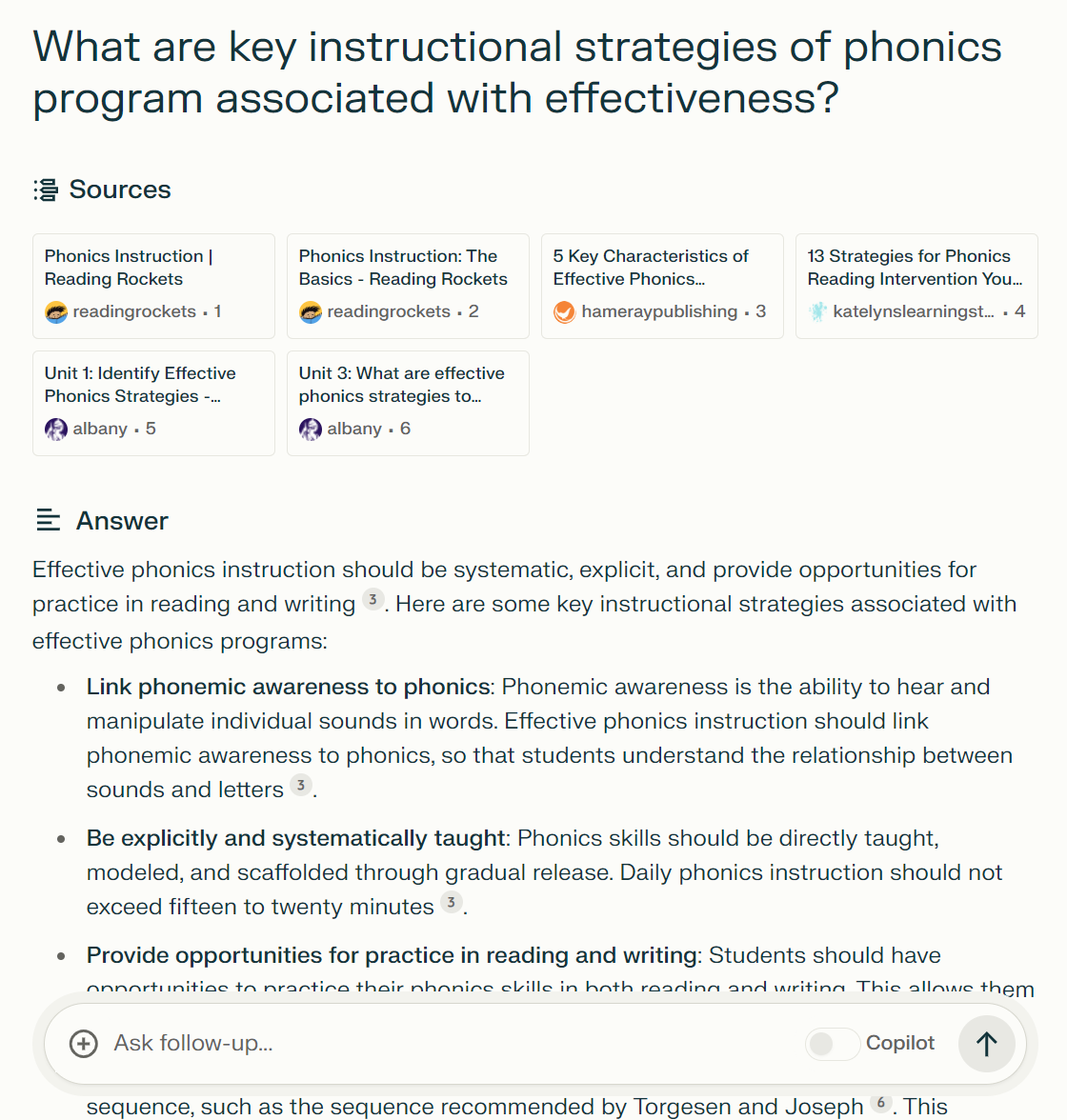
- At the bottom of the generated response, further options are available:
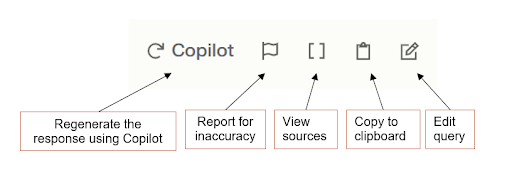
- When Copilot is used, the response will also include a list of related questions.

- At the top of the page, users have the option to either add to an existing collection or create a new collection of threads. Additionally, users can label individual threads and save them to their personal library.
- To find previous threads and collections, users can click on the Library tab located on the left side bar. The search bar located on the top right of the Library can be used to find previous threads.
Additional Features:
- The AI profile is located on the left side bar and allows users to provide additional information about themselves. This information is used by Perplexity to tailor responses further when searching.
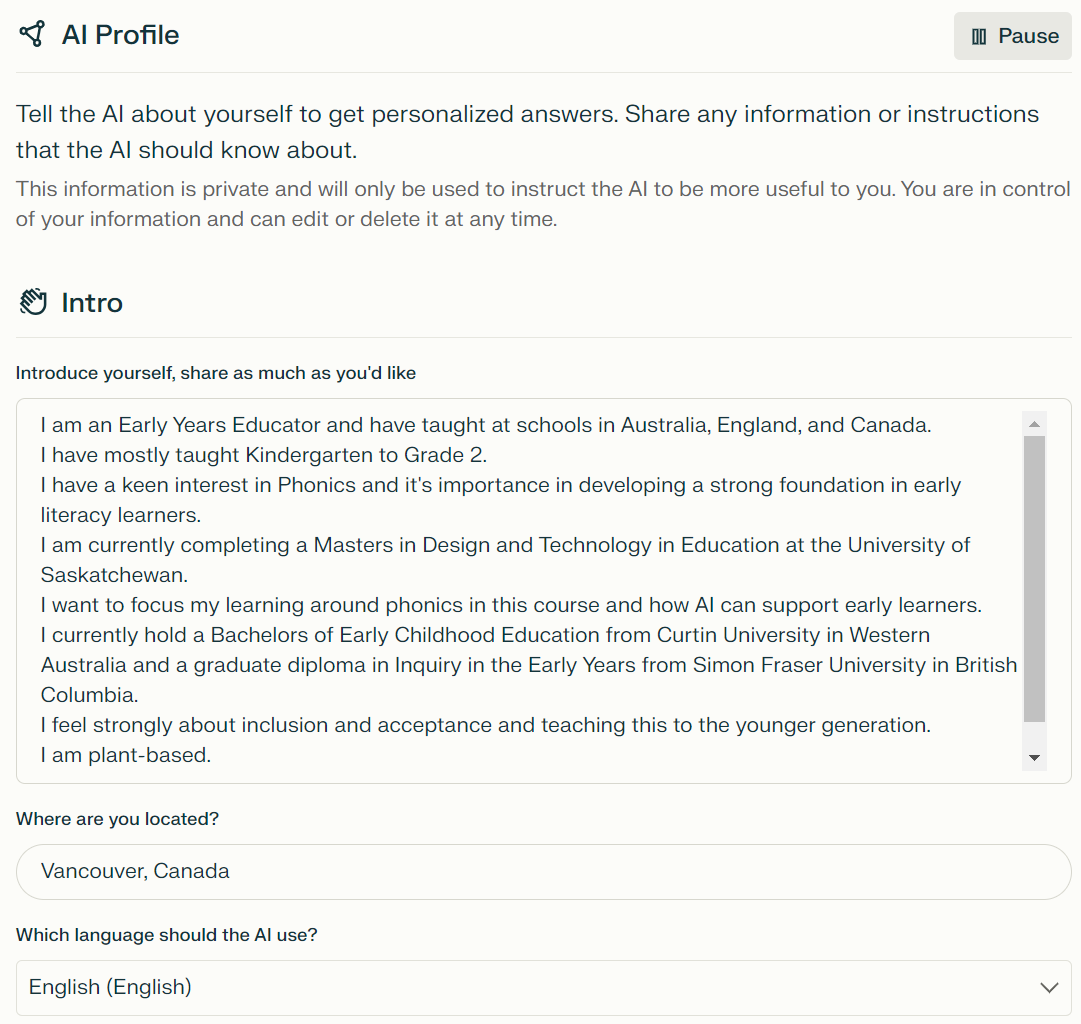
Prompt Engineering

Generating accurate and helpful information is only as good as the prompts provided. Here are some tips for how to tailor inputs to get optimal responses:
- Be clear and specific: Provide as much detail as possible, including relevant context or background information. For example, instead of asking, “How can I teach phonics?” ask, “What are some effective strategies for teaching phonics to struggling readers in a Kindergarten classroom with many ELA learners?”
- Ask follow-up questions.
- Use proper grammar and spelling.
- Use hypothetical scenarios: For example, you could ask, “How could I modify my phonics instruction for a student who is struggling with letter-sound correspondences?”
- Give examples of the format you want the generated response.
- Use the Copilot option and related searches to refine the search.
Recommendations
If you want to improve your understanding of and experience with Perplexity AI, there are a variety of resources and related technologies that could be helpful.
Online Communities: Engage with other users and developers on platforms like Reddit and Discord (Perplexity, 2023). The Perplexity AI subreddit and Discord server are active communities where you can discuss various aspects of the tool, share experiences, and learn from others (Unita, 2023).
Related Technologies: Explore alternatives to Perplexity AI to understand different AI-powered search and information discovery approaches. Some alternatives include Sourcegraph, Levity, and Stack AI (Perplexity AI, n.d.).
Tutorials and Guides: Use instructional resources to use Perplexity AI effectively. For example, Eager (2023) provides a guide on how to generate book summaries using Perplexity AI.
Prompt Engineering: Explore these articles that provide users with information on how to create effective prompts when searching LLM models:
- “10 Essential Prompt Engineering Methods For Successful ChatGPT & LLM Applications” from Topbot
- “The Beginner’s Guide to LLM Prompting” from Haystack – Deepset
- “A Go-To Guide to Master Prompt Engineering in Large Language Models” from LinkedIn
- “Practical Prompt Engineering” from Towards Data Science
Informative presentation
References
Eager, B. (2023, July 22). Writing ‘Scary Smart’ Book Summaries with Perplexity AI. Bron Eager. https://broneager.com/perplexity-ai-book-summaries
MacDowell, P., & Korchinski, K. (2023). A collaborative future: New roles of students and teachers learning and creating with generative AI. In S. Bauschard, S., A. Rao, P. Shah, & Shryock, C. (Eds.), Chat(GPT): Navigating the impact of generative AI technologies on educational theory and practice (pp. 490–507). Pedagogy Ventures.
Marr, B. (2023, June 12). The Best Prompts To Show Off The Mind-Blowing Capabilities Of ChatGPT. Forbes. https://www.forbes.com/sites/bernardmarr/2023/06/12/the-best-prompts-to-show-off-the-mind-blowing-capabilities-of-chatgpt/?sh=1892f9cf3f60
Mastery, T. (2023). Perplexity AI: Understanding the Language Model Evaluation Metric. DotCom Magazine. https://dotcommagazine.com/2023/04/perplexity-ai-understanding-the-language-model-evaluation-metric/
Mollick, E., & Mollick, L. (2023). Assigning AI: Seven Approaches for Students, with Prompts. Social Science Research Network. https://doi.org/10.2139/ssrn.4475995
Msv, J. (2023, May 19). Prompt engineering: get LLMs to generate the content you want. The New Stack. https://thenewstack.io/prompt-engineering-get-llms-to-generate-the-content-you-want/
Nelson, J. (2023, April 12). Perplexity AI: The Chatbot Stepping Up to Challenge ChatGPT. Decrypt. https://decrypt.co/126127/review-perplexity-ai-the-chatbot-stepping-up-to-challenge-chatgpt
Nguyen, I. (2023, June 15). The Beginner’s guide to LLM prompting. Haystack. https://haystack.deepset.ai/blog/beginners-guide-to-llm-prompting
Perplexity AI. (n.d.). Slashdot. https://slashdot.org/software/p/Perplexity-AI/alternatives
Perplexity. (2023). Reddit. Retrieved October 6, 2023, from https://www.reddit.com/r/perplexity_ai/
Shaikh, E. (2023). ChatGPT vs Perplexity AI – The Chatbots Face-Off. DemandSage. https://www.demandsage.com/chatgpt-vs-perplexity-ai/
Unita. (2023, February 17). Perplexity AI – Reviews, benefits & Requirements. https://unita.co/communities/perplexity-ai/
Vaidheeswaran, A. (2023, June30). A go-to guide to master prompt engineering in large language models. https://www.linkedin.com/pulse/go-to-guide-master-prompt-engineering-large-language-vaidheeswaran
Wolfe, C. R., (2023, July 31). Practical Prompt Engineering – towards data science. Medium. https://towardsdatascience.com/practical-prompt-engineering-74e96130abc4
Acknowledgement of AI Use
The integration of advanced artificial intelligence technologies facilitated the completion of this chapter. Nightcafe, an AI-based platform, was used to generate visual content. Additionally, Grammarly Pro was used to refine the text, ensuring grammatical accuracy and linguistic precision. Perplexity AI was used to help source recommendations for this chapter, including online communities and related technologies to Perplexity AI.

